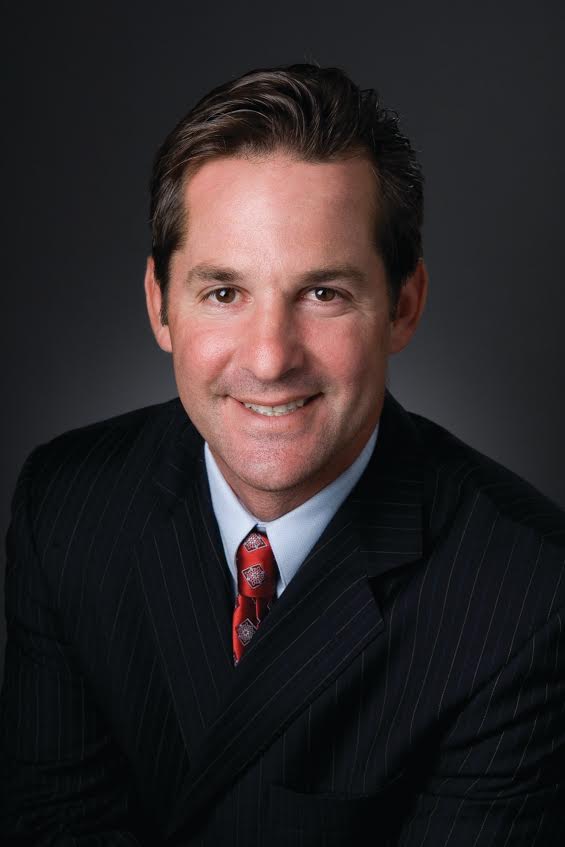As healthcare consolidation continues to take hold, private practice's future remains largely uncertain. New York-based Orlin & Cohen Orthopedic Associates, however, has adapted an integrative practice model, making the practice well-suited for healthcare's swift transformations.
 "They key to private practice success is being diversified in so many areas," says Craig Levitz, MD, an OCOA orthopedic surgeon and orthopedic surgery chairman and chief of sports medicine at South Nassau Communities Hospital in Oceanside, N.Y. "Quality orthopedic groups still control the patients they see, and when you see those patients, you want to offer the full gamin of orthopedic services to ensure quality and strengthen practice revenue."
"They key to private practice success is being diversified in so many areas," says Craig Levitz, MD, an OCOA orthopedic surgeon and orthopedic surgery chairman and chief of sports medicine at South Nassau Communities Hospital in Oceanside, N.Y. "Quality orthopedic groups still control the patients they see, and when you see those patients, you want to offer the full gamin of orthopedic services to ensure quality and strengthen practice revenue."
Dr. Levitz refers to OCOA as a musculoskeletal group because the practice offers patients the full spectrum of musculoskeletal care, including pain management, surgical services imaging, physician therapy and others. Dr. Levitz says the practice projects to have revenue reaching $75 million this year, and attributes this financial success to OCOA's dominant market share combined with its "robust pain management, physical therapy and MRI divisions."
"The days of private practice are dying," Dr. Levitz adds. "We have been profitable because our practice is primary care for orthopedics. People come to us first because of our market share and reputation."
Here is a look into the makings of OCOA's success, and why the practice may not only sustain, but come out financially on top in the wake of healthcare's uncertain future.
OCOA's team of subspecialized orthopedic surgeons
The practice doesn't only hire surgeons who successfully perform orthopedic procedures, but chooses surgeons who have a niche in which they excel. OCOA's surgical team is comprised of subspecialists including fellowship-trained knee, elbow and shoulder specialists, some of whom have trained under the renowned James Andrews, MD, Dr. Levitz explains.
"Our spine guys just do spine, like our total joint surgeons only do total joint," he says. "By specializing, we are able to offer a program in a community setting that you would normally find at a leading university orthopedic department."
The specialized surgeons draw in patients from across the state, sometimes even patients from 60 miles or 70 miles away. Dr. Levitz adds he has seen patients from Staten Island, and New York City.
"When you do something all day and limit yourself to five or six practice areas, you will be able to do a better job," he adds. "Patients often get better care from a subspecialist and that would be a good thing if that is where healthcare is trending."
Preparing for a value-based healthcare system: OCOA's bundled payments
OCOA implemented a bundled payment initiative when Medicare rolled out their voluntary bundled payment plan. Dr. Levitz explains the program has yielded tremendous results, as the practice has been $20,000 below Medicare's target cost. Key ways to reduce costs, thereby strengthening the practice's overall revenue stream, include being conscious of length of stay, improving pain management protocols and ultimately avoiding rehab facilities, which often result in an increased complication risk.
Dr. Levitz notes home care and nursing often result in much better patient outcomes, thereby truncating costs. He adds, "Almost all complications come from patients who go to rehabs because we lost control."
Improving pain management
For patients undergoing total joint procedures, OCOA started using a long-acting anesthetic that eliminated the majority of patients' pain within the first two days post-operation. Additionally, the practice has small teams of anesthesiologists who administer orthopedic anesthesia and regional blocks, coupled with other pain management tools such as cold therapy and tranexamic acid, which minimizes blood loss. Along with less invasive surgery, patients leave OCOA with minimal pain, Dr. Levitz says.
Prior to implementing such protocols, rehab costs comprised over 70 percent of the practice's total knee replacements' total cost. "That is an enormous number," Dr. Levitz adds. "This combination has improved our pain scores and our patient satisfaction."
Additionally, OCOA's orthopedic surgeons work hand-in-hand with the practice's interventional pain management specialists. More Americans are suffering from back pain and often desire to avoid surgery, driving patient demand for pain specialists. Of OCOA's pain management division's cases, 80 percent of cases are spine-related, Dr. Levitz explains.
OCOA's ASC & symbiotic relationship with South Nassau Communities Hospital
Nearly 10 years ago, OCOA opened its ambulatory surgery center, allowing the group to perform more cases on an outpatient setting and provided another avenue for increased revenue, as the ASC performs nearly 700 cases annually.
While some leading surgery centers have adversarial relationships with hospitals, OCOA formed a strategic relationship with the area's regional hospital, South Nassau Communities Hospital. He says the hospital and OCOA often collaborate because their successes are intertwined.
"We always have had a symbiotic relationship with the hospital because we were both smart enough to realize, when one does well, the other will also do well," Dr. Levitz says.
More articles on practice management:
The business of private practice — Dr. Paul Slosar on physician independence
How recording physician-patient conversations can alter their relationship: 5 insights
AAOS to collaborate with ASA on ASA's Perioperative Surgical Home Care Model: 4 things to know


